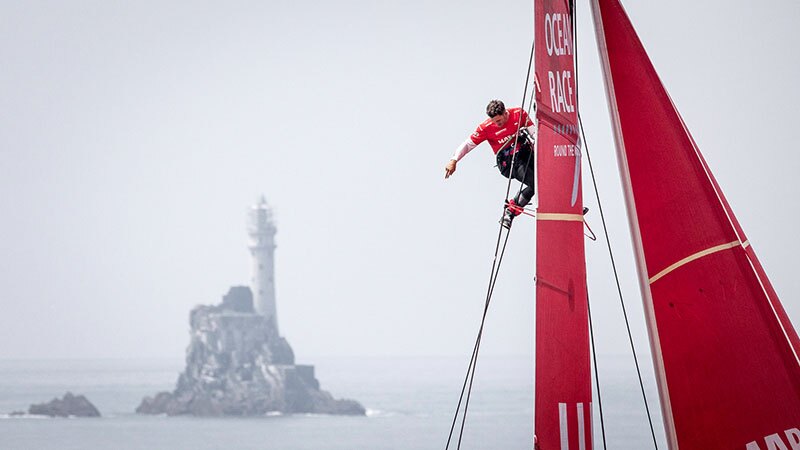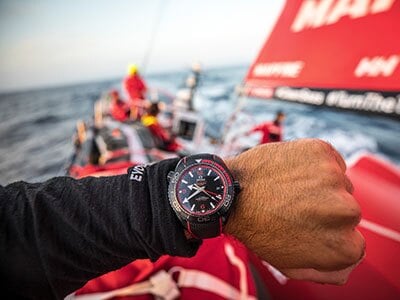No Hollywood script writer could have staged the finale any better than the thrilling real-life sporting cliff-hanger that played out on Leg 11.
Team Brunel appeared to have lost some of their sparkle in the first two days of the leg as they struggled back in fourth place, leaving the crews on Dongfeng and Mapfre to slug it out for first place – often separated by no more than half a mile. However, Team Brunel fought their way back into contention on the final night at sea after taking a more offshore route down the North Sea towards the finish line in The Hague than their two title rivals Dongfeng and Mapfre.
Forced to choose between the inshore and offshore routes for the last night at sea, Mapfre opted to join Brunel further out to sea, leaving the Dongfeng sailors alone on the inshore route with only the courage of their convictions for company.
When the sun rose over The Hague on the final day it looked like Dongfeng had blown their chances, and attention was refocused on Mapfre and Brunel as the pair match-raced their way through the final hours of the leg just boat lengths apart. Suddenly though, Dongfeng were back in the hunt. Their inshore route was finally paying dividends with stronger wind and a better angle to deal with the several knots of tide washing the boats away from the finish line. Dongfeng were closing fast but could they make it to the final turning mark ahead of Mapfre and Brunel?
The crowd in The Hague and the hundreds of thousands of sailing fans around the world watching online held their collective breath as, within only minutes of the finish line, Dongfeng Race Team powered across the bows of Mapfre and Team Brunel to snatch their first leg win of the race and secure overall victory.
It was an emotional moment for Dongfeng’s French skipper Charles Caudrelier, who won the 2011-12 edition as a crew member on Franck Cammas’s Groupama sailing team. “We always trusted each other. Nobody thought we were going to win this last leg, but I had a good feeling,” Caudrelier said. “I said ‘we can’t lose, we can’t lose, we can’t lose’… and we won!”
Although Omega ambassadors Peter Burling and Blair Tuke were both in the running for the overall trophy on the final leg, neither were able to become the first-ever winners of yachting’s ‘triple crown’ – Olympic gold, the America’s Cup and the Volvo Ocean Race. However, the duo say their first round-the-world race experience has left them hungry for more – perhaps in the form of their own Volvo Ocean Race campaign somewhere down the line, after the next Olympics and the 36th America’s Cup.
Tuke – who raced as a helmsman and sail trimmer on Mapfre – said racing a lap of the planet was incredible experience that he believed will make him a better all-round sailor. “We have always tried to take the opportunities when they came and for us this one came on different crews,” Tuke said. “I think we have learned a lot from our two teams and we will be able to bring that back to the sailing we do together in the future.” For his part, Burling said the race had lived up to every expectation he had of it prior to the start.
“We saw some incredibly tough and gruelling conditions down in the Antarctic Ocean and some really difficult equator crossings where at times we saw the water temperatures getting up over 35C/95F.
“This race makes the globe feel quite small when you consider that we are racing in a 65-foot boat that doesn’t go that fast compared to other modes of transport and yet it only takes you 20 days to get halfway around the world.”












